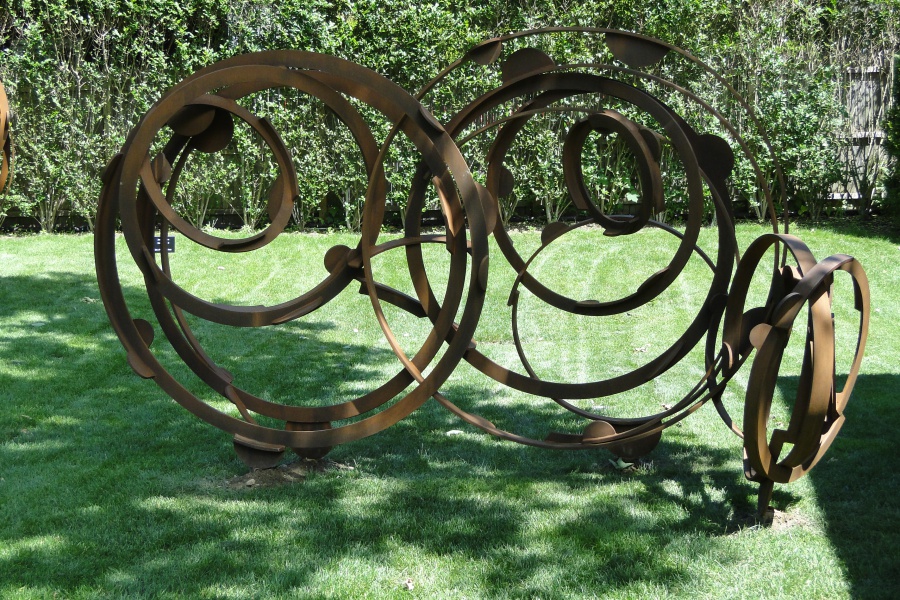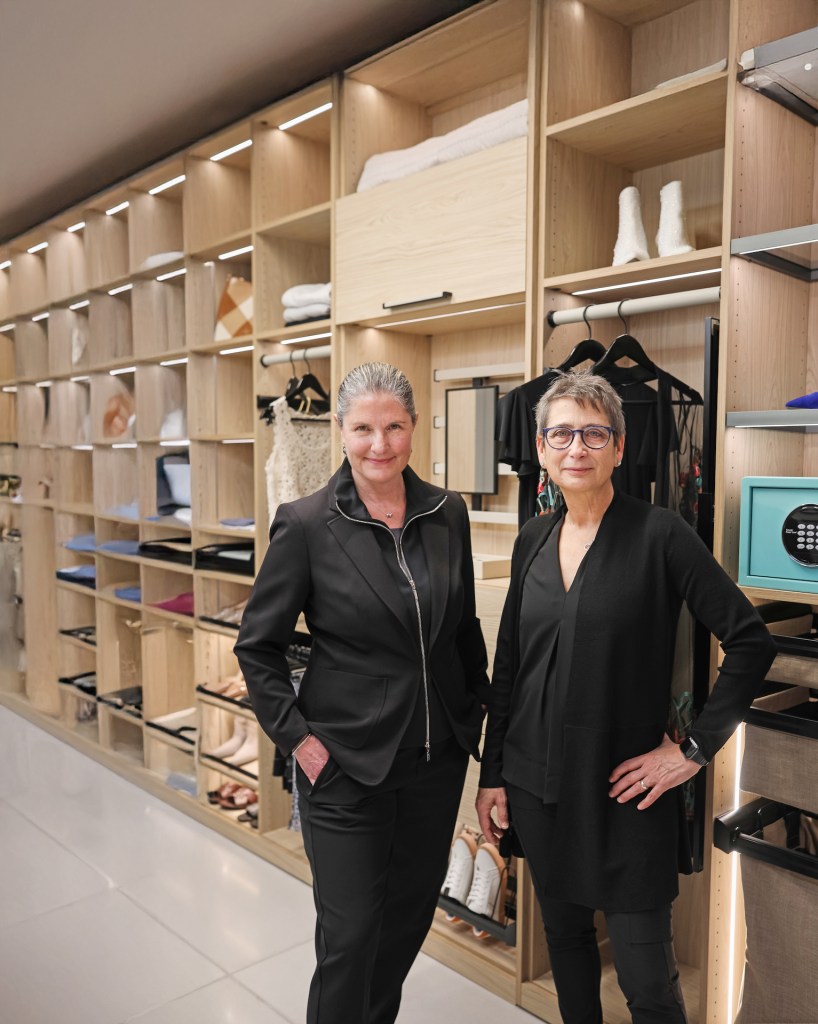Sculpture Garden at Guild Hall: Joel Perlman

The Sculpture Garden at Guild Hall is a hidden oasis, showing noteworthy works of diverse styles and materials. Situated at the back of the building, it’s a pleasure to experience the ongoing sculpture exhibits, especially in the open air. Although some viewers might not realize that there’s such a garden on Guild Hall’s grounds, it’s doubly pleasant to come upon the unique shapes as we walk around the premises. The current show by Joel Perlman is no exception where diversity is a key element.
Perlman’s materials and configurations catch our eye immediately, the bronze and steel shapes are seemingly hard-edged (literally and figuratively) yet often they are lyrical as well, including works that are also in the Wasserstein Gallery inside Guild Hall itself. What’s also arresting is the fact that some of the sculptures are shapes that Perlman cut and then welded together. This means of construction gives the pieces a strength and presence going beyond their lyrical quality: such contradiction is another outstanding aspect of Perlman’s art and craft.
Speaking of “construction,” it’s obvious that Perlman was influenced by Russian Constructivism; according to some observers, his work during the 1970s also shared a commonality with Minimalism (this critic thinks of sculpture by Louise Nevelson, in this regard, although her materials are different). Another reference perhaps may even be Perlman’s 1998 work, “High Spirit,” which reminds this critic of the new World Trade Center building. A quick look at the 104-story structure from a few miles away shows how the clouds engulf its spiral as tiny lights twinkle on its surface. Of course, Perlman’s “High Spirit” was not influenced by the new World Trade Center edifice, but both configurations evoke the same feeling and have a similar shape. The effects of both pieces are stunning.
While such references all go to demonstrate that Perlman’s work has a legacy deriving from fascinating sources, the current exhibit features pieces that convey other aspects. For example, his circular forms that meld into each other signify continuity and a sense of eternity. His circles within circles suggest the same themes.
Perlman’s small sculptures inside the Wasserstein Gallery continue the circular motif, but they are more decorative, suggesting patterns and real objects. For example, “Bronze Cyclone” recalls a ride at Coney Island. Another piece, “Tribeca,” evokes the image of a drum. “Green Space” looks like a particularly dangerous ride at a carnival. Such observations are not meant to be critical of Perlman’s images. Rather, the shapes suggest that he has so captured our imagination that we can’t help going along for the ride.
Joel Perlman’s sculpture will be on display until Oct. 14, 2013 at East Hampton’s Guild Hall, 158 Main Street. Guildhall.org



